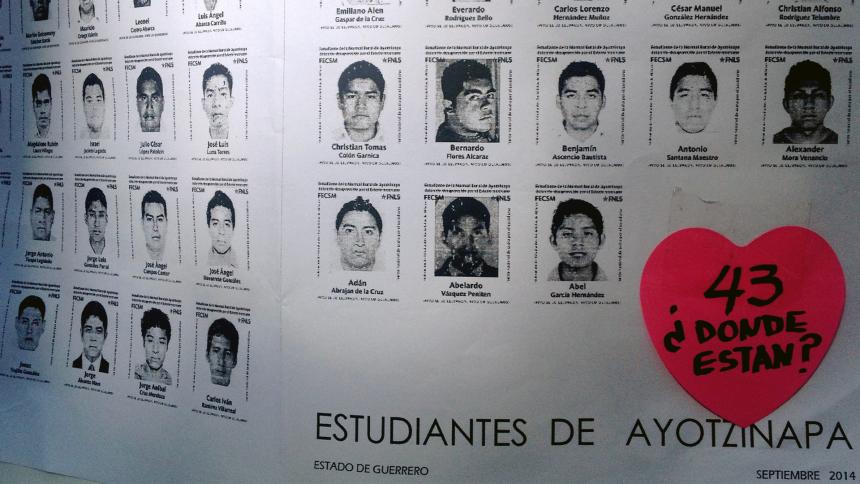
Iguala Kidnappings: The strange disappearance of 43 Mexican students
Nearly a decade ago, 43 students were kidnapped by the police in Iguala, Mexico, in what has become one of the country’s most notorious cold cases. No one has yet been held accountable for the crime and the mystery as to why the students were handed to the cartel by the authorities is starting to unravel.
The New York Times obtained evidence that revealed how complicit the authorities were in kidnapping the students. Around 23,000 text messages, investigative files, and witness testimonies have exposed that many police officers and military personnel in this region of Mexico had been in cahoots with the Guerreros Unidos cartel.
The Ayotzinapa Rural Normal School is an all-male school that trains its students to become teachers. Founded in 1926, the school is known for its activism and has a tradition of teachers and students hijacking buses and trucks as a form of protest. These 'thefts’ were only temporary, with the vehicles returned when the march ended.
On 26th September 2014, students had taken several buses to make their way to a march in Mexico City. According to reports, as the students were leaving Iguala, the police shot at the trainee teachers and bundled them into patrol cars.
What happened next has remained unknown, and the messages released by The New York Times do not fully establish the fate of the students. However, the evidence suggests they were murdered.
A testimony from a cartel member states that several of the students were taken to an unidentified house, where they were killed and dismembered. The witness said that machete marks were left on the floor, and the students' bodies were cremated at the crematory owned by the coroner’s family.
Unbeknownst to the students, in the months leading up to the kidnapping, the Guerreros Unidos had become increasingly paranoid from a combination of fatal infighting and trying to defend their territory from rival gangs. It is believed that the Guerreros mistook the buses of male students for a rival cartel.
Formed in 2009, the Guerreros Unidos are a splinter group of the Beltran Leva Organisation and operate in the Guerrero region of Mexico. Despite being smaller than the Sinaloa Cartel, which was formerly led by Joaquin ‘El Chapo’ Guzman Loera, the Guerreros Unidos have smuggled millions of dollars worth of heroin into the United States.
It was the US Drug Enforcement Administration that intercepted the 23,000 messages in 2014 after investigating the cartel’s drug trafficking into Chicago. However, it was not until last year that they turned over the messages to the Mexican officials.
The messages have provided the investigators with their biggest breakthrough yet and highlighted how deep the relationship between the cartel and government officials runs.
As the police were physically involved in the kidnappings, the military had been closely watching but never helped the students. The reports state that the military was using state-of-the-art spyware to keep an eye on the cartel. They never shared these details with the investigators.
The Iguala kidnapping investigation was riddled with flaws and showed the world that the then government were willing to cover up this brutal crime to hide the involvement of their very own. However, under their new government, President Andrés Manuel López Obrador has demanded the arrest of Mexican soldiers.
In June, the federal court in Toluca demanded the arrest of 16 soldiers connected to the case, with eight surrendering. Separately, four high-up officials in the military have been held in a military prison since last September in connection to the kidnappings.
The exact details of what happened to the students remain a mystery. However, a chilling message suggests the witness’s version of events may be true.
The wife of a jailed boss had lost track of a drug shipment to the United States. Believing the trafficker had stolen the drugs, she asked a fellow associate to pass on a message which said, ‘Doesn’t the driver know what happened to the 43? I’m sure he doesn’t want to be number 44.’









